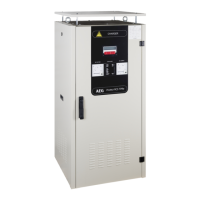What to do if my AEG Battery Charger displays 'LONG CHARGE TIME'?
- EesuttonAug 19, 2025
If your AEG Battery Charger displays 'LONG CHARGE TIME', contact the customer service department.

What to do if my AEG Battery Charger displays 'LONG CHARGE TIME'?
If your AEG Battery Charger displays 'LONG CHARGE TIME', contact the customer service department.
What to do if my AEG PROTECT RCS Battery Charger shows 'LOW MAINS VOLTS'?
If your AEG Battery Charger displays 'LOW MAINS VOLTS', first, switch on the rectifier. If the issue persists, check the fuses and replace them if necessary. Also, inspect the input breaker/switch.
Why does my AEG PROTECT RCS say 'HIGH MAINS VOLTS'?
If your AEG Battery Charger displays 'HIGH MAINS VOLTS', check the mains voltage. Ensure that the voltage matches the specified value on the customer drawing package.
What causes 'HIGH TEMPERATURE' on my AEG PROTECT RCS Battery Charger?
If your AEG Battery Charger displays 'HIGH TEMPERATURE', check the fan(s) and make sure no obstacles are blocking the airflow. Verify the ambient temperature and check the thermo switch.
What to do if my AEG PROTECT RCS Battery Charger displays 'CHARGER FAULT'?
If your AEG Battery Charger displays 'CHARGER FAULT', check the F1 fuse. If the issue persists, contact the Customer Service Department.
Why does my AEG PROTECT RCS Battery Charger show 'LOW BATT.VOLTS'?
If your AEG Battery Charger displays 'LOW BATT.VOLTS', switch on the rectifier. Also, check the mains.
How to fix a white display on my AEG Battery Charger?
If your AEG Battery Charger displays a white screen, do not touch any button for 5 minutes. This will automatically activate the default menu. Hold the rightmost button, the contrast will be increased.
What to do if my AEG PROTECT RCS Battery Charger displays 'HIGH BATT. TEMP.'?
If your AEG Battery Charger displays 'HIGH BATT. TEMP.', check the battery cabinet temperature.
What to do if my AEG PROTECT RCS displays 'BATTERY CURR.LIM'?
If your AEG Battery Charger displays 'BATTERY CURR.LIM', this is a warning. If it persists longer than the usual charge time, contact the Customer Service Department.
What to do if I see 'HIGH CHARGR CURR' on my AEG PROTECT RCS?
If your AEG Battery Charger displays 'HIGH CHARGR CURR', contact the customer service department.
| Brand | AEG |
|---|---|
| Model | PROTECT RCS |
| Category | Battery Charger |
| Language | English |
Details the components visible on the front of the charger with the door closed.
Shows the layout of components from the side of the charger.
Lists the essential components included in the charger's standard configuration.
Lists the various optional features and components available for the charger.
Describes the elements located on the charger's front door.
Identifies and describes the different terminal blocks for connections.
Provides guidelines for safely handling and transporting the equipment.
Details site selection, floor requirements, and securing the rectifier charger.
Specifies requirements for installing batteries and ensuring floor strength.
Defines acceptable operating and storage conditions regarding temperature and humidity.
Instructions for connecting the main power supply, including safety aspects.
Procedure for correctly connecting the battery to the charger.
Guidance on connecting the common remote alarm output.
Instructions for connecting the load to the equipment's terminals.
Essential checks to perform before powering on the system.
Step-by-step guide for powering up the rectifier and initial checks.
Specific start-up procedure for TPRe TD units in parallel configurations.
Process for performing the initial commissioning charge for batteries.
Describes the default screen layout showing key information and navigation.
Explains how to access the main menu and interpret rectifier status indicators.
Details the structure of the user interface, menus, and navigation functions.
Explains how system status messages are displayed on the LCD screen.
Guides on accessing and displaying various system measurements and data.
Covers manual operations and activation of specific charge modes or tests.
Details system settings such as language, date, time, and passwords.
Illustrates the system's behavior in different operational states with associated diagrams.
Describes available battery charge modes: floating, high rate, and commissioning.
Explains the internal working principle and components of the rectifier system.
Details the functions and architecture of the Generic Control and Alarm Unit.
Explains the role and features of the Three-Phase Control Board.
Describes the front-panel display board and keyboard for user interaction.
Covers optional features for monitoring, signalling, and alarms like LED boxes and relay boards.
Details communication interfaces such as RS485 Modbus, IEC 61850, and TCP/IP.
Explains optional features related to load management and protection.
Describes various options for battery management, including temperature compensation and capacity testing.
Lists optional features related to the equipment cabinet, such as heating and lighting.
Explains configurations for ensuring maximum load supply availability and maintenance.
Describes paralleling systems to increase power or battery capacity.
Details options used in parallel configurations, including passive load sharing.
Recommends annual preventive maintenance and lists key inspection tasks.
Guidelines for fan maintenance and recommended replacement intervals.
Recommendations for maintaining and replacing DC capacitors and filters.